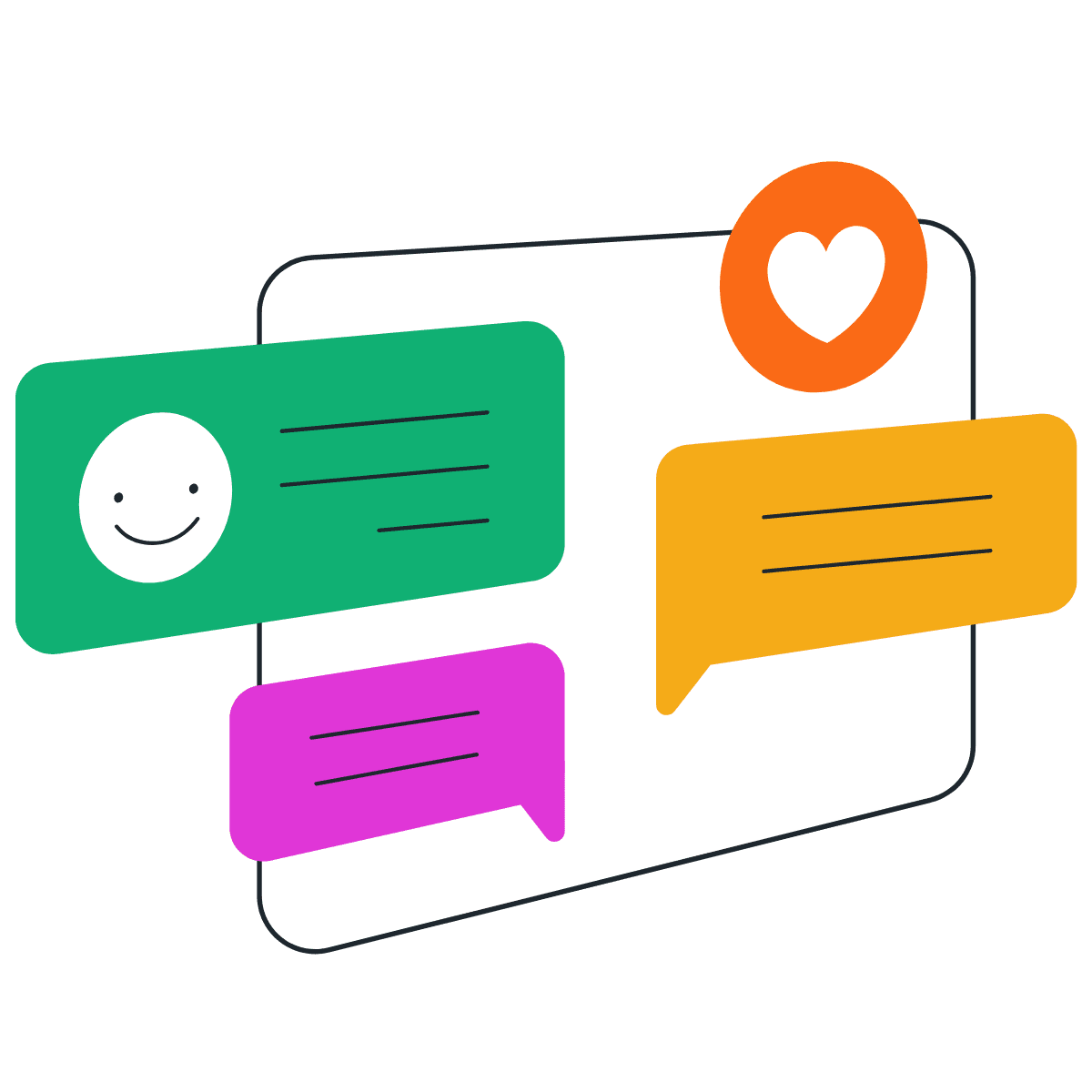Summary On-page SEO helps search engines understand your website by optimizing titles, content, structure, and speed. Off-page SEO builds authority through backlinks, AI citations, and brand mentions. Start by optimizing on-page fixes if pages aren’t ranking, then move to off-page tactics once you have a solid SEO foundation. |
Learn how on-page and off-page SEO work together to grow your traffic.
If you’ve ever wondered why your carefully written blog post isn’t climbing the rankings, or why your competitor with a less-polished site keeps showing up above you in search, I understand that frustration completely. I’ve been there.
For years, I invested energy in publishing useful content and refining headlines, only to discover that organic traffic growth was minimal. It wasn’t until I understood the balance between on-page SEO and off-page SEO that things began to fall into place.
The key is knowing when to focus on each area. Whether you’re just learning how to do SEO or refining your content strategy plan, the off-page and on-page checklists below will help you prioritize.
What’s the difference between on-page and off-page SEO?
On-page SEO refers to the elements you can control directly on your website. Think: your content, titles, internal links, and page speed. It’s everything happening within the four walls of your site.
Off-page SEO, on the other hand, refers to the activities that occur outside of your site to influence search engine rankings. Off-page factors include backlinks from other websites, brand mentions, online reviews, and your activity on platforms such as Google Business Profile.
Here’s the easiest way I think about it:
- On-page is your house.
- Off-page is your neighborhood reputation.
You need both to be found and trusted.
How does each type of SEO affect your rankings?
Google uses hundreds of signals to determine how and where to rank a page. On-page SEO helps search engines understand the topic of your page. Off-page SEO helps them decide how trustworthy and authoritative it is. If you’re unsure how to measure performance, here’s a guide on how to tell if SEO is working.
And while we’re here, let’s not ignore technical SEO. This includes factors such as crawlability, site architecture, XML sitemaps, and HTTPS.
I won’t delve into that here, but if you’re experiencing indexing issues or noticing unusual crawl behavior in Google Search Console, technical SEO might be the next area to explore.
On-page SEO checklikst
On-page SEO is where I typically begin with nearly every site I work on. It includes the elements you can control on your website, such as page titles, headers, site speed, and image formatting.
If you think of your website as a store, on-page SEO is the equivalent of the layout, signage, product descriptions, and even the speed of the checkout line. It shapes the experience and provides search engines with an understanding of what your pages offer.
Let’s walk through the most important on-page SEO elements and how to improve each one.
1. Title tags
Your title tag is the blue link people see in search results. It’s your first impression, so you want it to be short, relevant, and clickable. Google tends to cut off titles that are longer than 60 characters, so I try to keep mine under that limit.
Improving your title tag means placing your target keyword early, writing naturally, and considering what would make you click.
I often A/B test titles to see what performs best. If your page is about beginner yoga poses, a title like “10 Beginner Yoga Poses to Get You Started Today” is more actionable than simply “Yoga for Beginners.”
Avoid keyword stuffing or repeating the same phrases. You want it to feel useful, not robotic. Think of your title tag as a headline rather than a checklist of terms.
2. Meta descriptions
While Google doesn’t use meta descriptions as a ranking factor, they do influence whether someone clicks on your result. A meta description is your chance to pitch your page in 155 characters or fewer.
A good meta description uses active voice, tells the reader what they’ll learn, and often includes a soft CTA (like “learn how” or “find out why”). I like to begin my meta descriptions with a verb. For example, “Learn the key differences between on-page and off-page SEO and how to use both to improve your search rankings.”
Avoid duplicating the title tag. Your meta description is a second chance to grab attention, so use it wisely. When I see clients skip this step, they often end up with generic or auto-generated snippets in search results.
3. URL structure and slugs
Your URL should reflect the content of your page and be easy to read. A descriptive slug helps users and search engines understand what the page is about at a glance.
Shorter is generally better. Use hyphens to separate words and include your main keyword if it fits naturally. For instance, a URL like /on-page-seo-tips is more helpful than something like /page?id=8372 or /seo-2023-onpage-seo-longtail-tips.
Once a URL is live, don’t change it unless necessary; redirecting can get messy. I always map redirects before making any updates to published URLs.
4. Header tags and page hierarchy
Headers help structure your content, and they make it easier for both users and search engines to navigate the page. You should have only one H1 per page, typically matching your page title. From there, use H2s to break up major sections and H3s for supporting details.
I like to outline my header structure before I start writing. It helps me organize my thoughts and keeps the page scannable. A well-structured article about SEO might use H2s for “On-page SEO” and “Off-page SEO” and H3s for each tactic within them.
Don’t use headers just to style your text. That’s what CSS is for. Headers should reflect the content hierarchy and provide clear indications of what’s to come.
5. Page content depth, keywords, and formatting
Your site earns its place in search results by offering genuine depth and value. Google matches users with the most helpful content, so write comprehensively to answer questions thoroughly. I typically aim for 1,000 to 2,000 words, but quality always takes precedence over quantity. A detailed 800-word guide can outperform a bloated 2,500-word piece. Avoid thin pages and overlapping text, since duplicate content in SEO can weaken rankings and waste crawl budget.
Keyword strategy still matters, but Google has evolved beyond simply counting words. Include your primary keyword in the title, first 100 words, headers, and meta description. However, you also need to consider topics and semantic relevance. Focus on semantic relevance by covering related subtopics, using synonyms, and addressing likely user questions.
Formatting dramatically impacts readability and scannability. Use short paragraphs, clear headers, ample white space, bullet points, and callouts to clarify your points. I recently helped a client transform a text-heavy CRM article by breaking it into bulleted comparisons and H3 subsections. The reformatted piece became more readable and ranked higher within weeks because users stayed longer and engaged more with the content.
6. Internal links and anchor text
Internal links help Google crawl your site and assist users in finding related content. I try to include a few internal links in every post, pointing to pages that expand on related topics or answer follow-up questions.
The key is to use meaningful anchor text. Instead of “click here,” say something like “learn how to structure your blog posts.” That tells Google (and users) what to expect.
For example, if I mention content management in this article, I’d link to a more detailed guide using the phrase “content management guide” rather than a generic term. Being specific reinforces topic clusters and improves crawlability.
7. Image optimization and alt text
Images can slow down your site if they’re not optimized. I always compress mine using tools like TinyPNG or the SMUSH plugin (if you’re using WordPress). It reduces file size without hurting quality.
Alt text is another opportunity to include relevant keywords, but more importantly, it makes your content accessible. Describe what’s in the image in plain language. For instance, “screenshot of title tag in Yoast SEO editor.”
Also, be thoughtful about file names. Instead of IMG_0345.jpg, rename it to something like “on-page-seo-title-tag-example.jpg.“
8. Page speed
Page speed matters for both on-page SEO rankings and user experience. If your site takes more than three seconds to load, most people will leave (bounce rate). I use tools like GTmetrix or PageSpeed Insights to identify slow-loading assets.
Most of the time, the culprits are uncompressed images, too many plugins, or heavy JavaScript. You can improve speed by enabling lazy loading, using a caching plugin, and upgrading to a faster hosting plan.
One of my sites saw a 20% drop in bounce rate simply by reducing load time from 4.5 seconds to under 2 seconds. It’s worth the effort.
9. Mobile experience
Mobile-first indexing means that Google prioritizes your mobile site over your desktop version. If your site is not mobile-friendly, you’re missing out on traffic.
When optimizing your site for mobile, consider elements like responsive design, readable fonts, tappable buttons, and eliminating horizontal scrolling. I always test with Google’s Mobile-Friendly Test and browse my pages on a phone to catch real-world issues.
For example, I once discovered that a sticky header covered key content on mobile. A minor CSS adjustment made a significant difference in user experience and SEO rankings.
10. Schema markup
Schema helps search engines understand your content more effectively by providing it with context. It can also improve how your content appears in search results with rich snippets like star ratings or FAQs.
You can use plugins like Rank Math or Schema Pro to add schema markup to your posts. Alternatively, if you’re comfortable, you can add JSON-LD directly to your HTML.
I used schema markup to add FAQ snippets to one of my how-to guides, and it started showing in rich results within a week.
11. Core Web Vitals
Google’s Core Web Vitals focus on three key aspects of user experience: loading, interactivity, and visual stability. They are:
- Largest Contentful Paint (LCP) measures how fast the largest element loads.
- First Input Delay (FID) measures the responsiveness of a webpage when a user interacts with it.
- Cumulative Layout Shift (CLS) measures the extent to which content shifts unexpectedly during loading.
Improving core web vitals results in faster and more reliable sites. Tools such as Lighthouse and WebPageTest can help you assess the performance of your website.
For example, replacing a large hero image that loads late can significantly improve LCP. I’ve also reduced CLS by setting fixed dimensions on image and ad containers.
The better your Core Web Vitals, the more likely people are to stick around, and the more Google rewards you for that.
Off-page SEO checklist
Once your website’s on-page SEO elements are optimized, shift focus to off-page SEO. Unlike on-page SEO, which focuses on optimizing elements within your site, off-page SEO increases credibility and organic visibility beyond your domain. Think of it as your online reputation. It’s what others say about you when you’re not in the room.
Off-page SEO is a longer-term strategy that requires relationship-building, strategic promotion, and consistency. When Google sees credible sites linking to yours, that signals your content is worth showing. Let’s break down the major off-page components and how to make them work for you.
1. Backlinks and link-building tactics
Backlinks are among the strongest indicators of authority to Google. When reputable sites link to yours, it’s a vote of confidence. A few high-quality, relevant backlinks are worth more than dozens of spammy ones.
Some link-building tactics I’ve used:
- Guest posting on industry blogs
- Building resource pages or data studies
- Reaching out to journalists through platforms like HARO
- Digital PR and original research
Avoid shortcuts like paid links, link exchanges, or low-effort directories. They rarely last long-term as Google becomes smarter each year. Prioritize relationships and relevance, and your backlinks will compound over time.
2. Local SEO signals (NAP citations and reviews)
If you run a local business, your name, address, and phone number (NAP) should be consistent across every site you’re listed on. These details help search engines verify your business is real and trustworthy.
Encourage happy customers to leave reviews once listings are live. A single 5-star review significantly impacts local pack visibility.
3. Google Business Profile and directories
If you run a local or service-based business, your Google Business Profile is among your most critical off-page tools. It enables map results, local query appearances, and direct customer connections.
Complete every profile section, including hours, services, photos, Q&A, and updates. Keep listings active by posting weekly updates and responding to inquiries.
Beyond Google, target reputable niche directories. Don’t submit everywhere. Instead, focus on platforms that real users visit, such as industry associations, local chambers, or review sites.
4. Social signals and brand mentions
While Google states that social signals aren’t direct ranking factors, they do play an indirect role. When content is shared widely, it drives traffic, increases visibility, and often leads to backlinks, which can positively impact rankings.
Brand mentions without links also add credibility. Google associates these mentions with your site and may consider them when evaluating your overall authority. I’ve seen this when a client’s brand was mentioned in a podcast roundup without a backlink, and their traffic from related terms grew steadily.
When to focus on on-page SEO vs. off-page SEO
When working with a limited budget or timeline, one of the biggest SEO challenges is knowing where to focus first. Should you keep refining content, or start building links?
In my experience, the answer depends entirely on your starting point. On-page SEO lays the groundwork, while off-page SEO helps you compete once the foundation is solid. You need both, but not necessarily at the same time.
Understanding when to shift gears makes you a more strategic thinker. Below, I’ll break down how to evaluate your site’s current state and determine whether on-page or off-page SEO deserves your attention at this time.
If your content isn’t ranking, start with on-page
When pages aren’t ranking or are stuck on page two or lower, I start with on-page setup. Weak title tags, poor keyword targeting, or thin content are often the reasons for poor performance. Even the best backlinks won’t save a page that doesn’t signal its purpose.
- Review title tags, headers, meta descriptions, and internal links.
- Use Google Search Console to check what queries trigger your content.
- Low or irrelevant impressions usually indicate on-page issues.
Fixing these on-page basics often leads to quick wins.
If traffic stalls after on-page optimization, look to off-page
Once your site is technically sound and its pages are optimized, but its rankings plateau, focus on off-page optimization. Backlinks, citations, and brand signals tell Google whether it should trust your site over similar pages.
I analyze competitors who outrank clients and often find stronger off-page profiles with more referring domains, mentions, and diverse link sources. When content is comparable, external factors make the difference.
That’s when I shift toward guest posts, partner backlink requests, local listing improvements, and encouraging customer reviews. Results aren’t immediate, but rankings typically rise within a few months.
How your business type impacts your SEO priorities
Not every website needs an identical SEO strategy. Local service providers benefit more from reviews and directory listings than SaaS companies publishing thought leadership.
- Local businesses need a strong Google Business Profile and consistent citations.
- E-commerce stores rely on product schema, image optimization, and backlinks from review sites.
- Content-driven sites need to prioritize on-page depth and then build topical authority through backlinks.
Knowing your business goals helps you focus your time and budget.
Ready to take your SEO further?
If you’re unsure where to begin or how to prioritize your efforts, that’s precisely where I come in. I work with small businesses and marketing teams to simplify SEO and develop strategies that drive results without wasting time or budget.
Whether you’re starting from scratch or trying to improve what you’ve already built, I can help you improve both your off-page and on-page SEO. If you’d rather delegate the work, here’s what to know about hiring SEO services.
Ready to take the next step? Schedule a free consultation today.
FAQs about on-page SEO vs. off-page SEO
Is on-page SEO or off-page SEO more important?
On-page SEO and off-page SEO work best when they support each other. On-page helps search engines understand your content clearly, while off-page builds the trust signals that push rankings higher. If you’re just getting started, prioritize on-page first—it’s the foundation of everything else.
What percentage of SEO is off-page and on-page?
There isn’t a strict percentage that applies to every site. Early on, I typically recommend spending most of your time on on-page SEO (about 60–70%). Once your content and structure are solid, shift your focus to off-page efforts, such as backlinks and local signals, to increase your authority.
How do I check if my off-page SEO is working?
You can track your off-page SEO by monitoring backlinks and referral traffic using tools like Ahrefs, SEMrush, or Google Search Console. If you’re gaining links from reputable sites and your rankings are improving for competitive keywords, your off-page strategy is having a positive impact.
Can I rank well with only on-page SEO?
It’s possible to rank with just on-page SEO for low-competition or niche keywords. However, if you’re in a crowded space, you’ll likely need off-page support as well. Pages with strong content but no external links often struggle to break into top positions.
What’s the easiest way to get started with off-page SEO?
Begin by claiming your Google Business Profile and listing your business in high-quality directories that are relevant to your industry. Then, build relationships that naturally lead to links or reviews with partners, customers, or local organizations.







